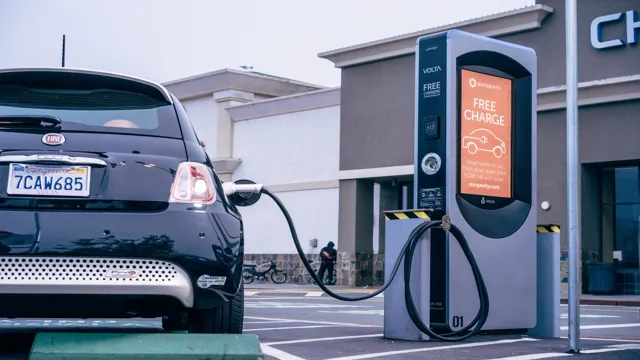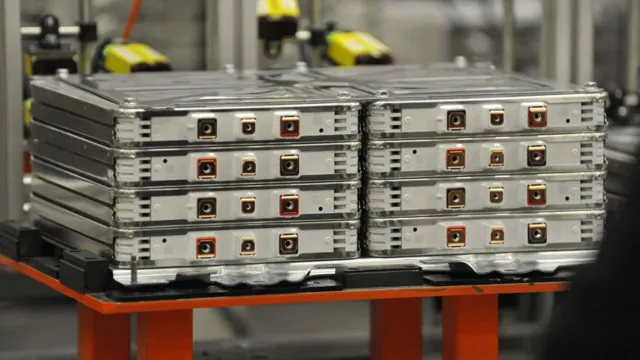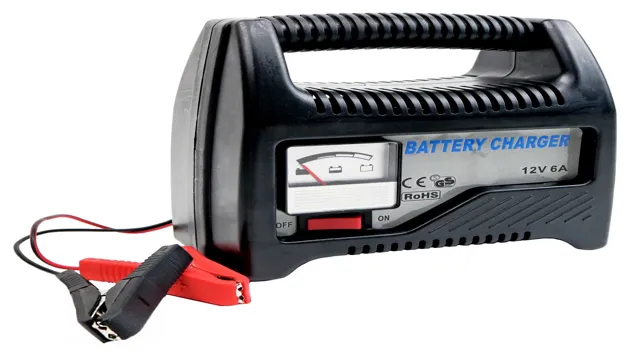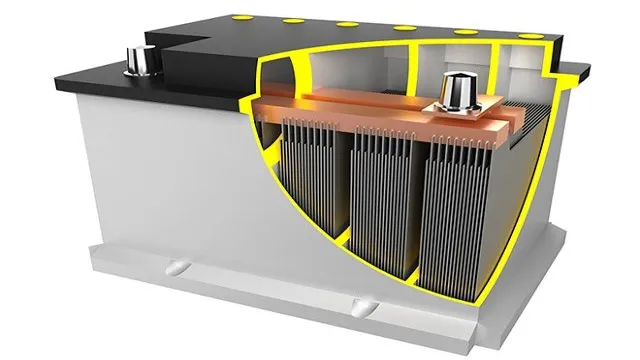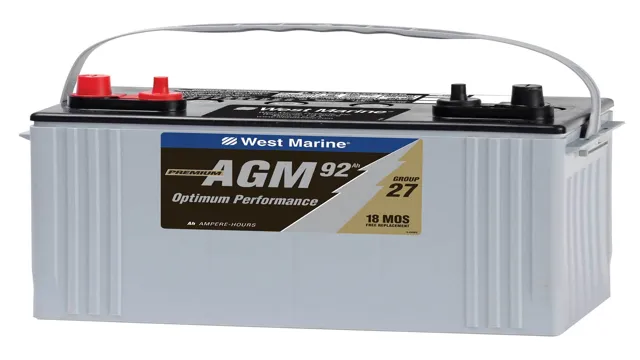Rev Up Your Electric Ride: Top Charging Stations for Your Car Battery
Electric cars are soaring in popularity as the world becomes more aware of its impact on the environment. However, owning an electric car requires access to charging stations, which is not always easy to find. In this comprehensive guide, we will explore electric car battery charging stations and everything you need to know about them.
We will discuss different types of charging stations, how they work, where to find them, and other important information that electric vehicle owners should know. From level 1 charging to level 3 DC fast charging, this guide has got you covered. So buckle up and let’s dive into the world of electric car battery charging stations!
Types of Charging Stations
If you’re in the market for an electric car, you’re undoubtedly aware of the different types of charging stations available on the market. The most common type is Level 2 charging stations, which are typically installed in homes and businesses. These stations provide a higher voltage than a standard wall outlet, allowing your electric car to charge much faster.
For drivers who need a quick charge while on the go, DC fast charging stations are the best option. These stations are typically found at rest areas and other public locations and provide a substantial charge in a very short amount of time. Finally, wireless charging stations are the newest trend in electric car charging.
These stations use magnetic fields to wirelessly charge your car’s battery, eliminating the need for a charging cord altogether. Whatever your preferred charging method, it’s essential to have access to reliable electric car battery charging stations to keep your car fully charged and ready to get back on the road.
Level 1 Charging
Level 1 charging is a type of charging station that is commonly found in households and public areas, such as parking lots. These charging stations use a standard 120-volt outlet to charge the electric vehicle’s battery. While it is the slowest method of charging, it is the most accessible and convenient, allowing EV owners to charge their vehicles overnight while they sleep or during the day while they’re at work.
Level 1 charging is ideal for EV owners with driving needs that don’t exceed the vehicle’s battery range. However, it’s important to note that Level 1 charging may not be suitable for EV owners who need to travel long distances or have a higher driving frequency. Nevertheless, Level 1 charging is a great option for those who want to minimize their carbon footprint while saving money on gas and maintenance costs.

Level 2 Charging
Level 2 charging is a type of electric vehicle (EV) charging that provides faster charging times than Level 1 charging. Level 2 charging stations use a 240-volt alternating current (AC) power source and can charge your EV up to 10-60 miles per hour, depending on your EV’s battery capacity and the output power of the charging station. There are several types of Level 2 charging stations, including wall-mounted stations, pedestal-mounted stations, and portable stations.
These charging stations require professional installation by a licensed electrician and may be more expensive than Level 1 charging stations. Level 2 charging stations are ideal for home charging, workplace charging, and public charging areas where you may need a quick top-up while running errands or having a meal. With Level 2 charging, you can spend less time charging and more time driving your EV.
It’s a convenient and reliable option for EV owners who want to keep their vehicles fully charged and ready to go at all times.
DC Fast Charging
DC fast charging is becoming an increasingly popular and crucial aspect of the electric vehicle (EV) industry. There are a few different types of charging stations available for EV owners, each with its own unique advantages and specifications. Level 1 and Level 2 chargers are slower and are typically used for home charging or in workplace settings.
DC fast charging, on the other hand, provides a much more rapid charge and is necessary for longer trips or when drivers need to top up quickly. This type of charging station uses direct current (DC) instead of alternating current (AC) to fast charge the battery, allowing for a full charge in as little as 20 minutes. There are different levels of DC fast charging, with some offering up to 350 kilowatts (kW) of power.
It’s important to note that not all EVs are compatible with all types of fast charging stations, so it’s essential to check your EV’s compatibility before plugging in. As the use of EVs continues to grow, so too will the need for DC fast charging infrastructure to support them.
Choosing the Right Station
When it comes to owning an electric car, one of the most important aspects to consider is finding the right electric car battery charging station. With the popularity of electric cars on the rise, more charging stations are popping up in various locations, from gas stations to malls to public parking garages. It’s important to choose a station that’s conveniently located and offers the amenities you need while you wait for your car to charge.
Some stations offer fast charging, while others may only offer slower charging options. It’s important to research the stations in your area ahead of time to determine which one is the best fit for you and your car. Additionally, be sure to check the cost of charging at each station, as prices can vary.
By taking the time to choose the right charging station, you’ll be able to keep your electric car fully charged and ready to go whenever you need it.
Power Output
When it comes to choosing the right station, one important factor to consider is power output. This refers to the maximum amount of power that the station can transmit. It’s important to choose a station with a power output that meets your specific needs.
If you’re planning on using your radio station for a small community, a lower power output may be sufficient. However, if you’re looking to reach a larger audience, a higher power output will be necessary. It’s also important to ensure that your station is compliant with local regulations for power output.
Keeping these factors in mind when choosing your station will help ensure that you have the appropriate power output for your specific needs.
Connectivity
When it comes to choosing the right station for your connectivity needs, there are a few things you should consider. Firstly, think about how frequently you’ll be using the station and what type of connectivity you require. If you only need to charge your phone occasionally, a basic charging station in a public space may suffice.
However, if you’re a frequent traveler in need of high-speed internet access, you may want to consider investing in a portable Wi-Fi hotspot. Additionally, it’s important to research the station’s coverage area to ensure that you’ll be able to connect when and where you need to. Don’t forget to check for any fees or restrictions associated with the station.
By thoroughly considering your specific connectivity needs and researching the options available to you, you can choose the right station to stay connected and productive on the go.
Portability and Installation
When it comes to choosing the right weather station, there are a few factors to consider. One of them is portability and installation. If you need to move your weather station frequently, perhaps for field research or outdoor events, you’ll want something lightweight, compact, and easy to set up, like a handheld anemometer or a portable weather station.
On the other hand, if you’re looking for a more permanent solution, a fixed-mount weather station that you can attach to a roof or post might be the better choice. This will give you accurate and reliable data without worrying about constantly moving the device. So, before you make your purchase, think about how you plan to use your weather station and where you’ll be installing it to ensure that you choose the right one for your needs.
Top Brands and Their Products
Looking for a reliable electric car battery charging station? Look no further than the top brands in the market. Leading the way is Tesla with their Supercharger network, which can charge your car with up to 150 kW of power in just 30 minutes. Other popular options include the ChargePoint Home Flex, which offers customizable charging options and remote monitoring, and the Bosch Power Max Level 2 EVSE, which can charge your car up to 5 times faster than a standard outlet.
No matter which brand you choose, investing in an electric car battery charging station is a must for any electric vehicle owner who wants to avoid the hassle and inconvenience of running out of battery power on the road. With their fast and efficient charging capabilities, these advanced charging stations will have you back on the road in no time.
Tesla Supercharger
Tesla Supercharger is one of the top products in the EV charging industry. With state-of-the-art technology, Tesla Superchargers provide a fast and convenient way to charge your Tesla vehicle. These charging stations are strategically located near highways, popular destinations, and populated areas for easy access.
With a charging rate of up to 170 miles in just 30 minutes, Tesla Supercharger allows electric vehicle owners to travel long distances without worrying about running out of power. Tesla has consistently improved its Supercharger network, adding more stations and increasing charging speeds for a better experience. Other major brands in the EV charging space include ChargePoint, EVgo, and Electrify America.
Each brand offers different features and benefits, but Tesla Supercharger stands out as a reliable and efficient option for Tesla drivers.
ChargePoint Home Flex
If you’re searching for an electric vehicle charging station for your home, ChargePoint Home Flex is one of the top brands to consider. This EV charging station is designed for indoor or outdoor use and has a flexible amperage range of 16 to 50 amps, allowing you to adjust the charging speed to fit your needs. One of the standout features of the ChargePoint Home Flex is its ability to integrate with your home energy system, meaning you can schedule charging during off-peak hours to save money on your energy bill.
Additionally, with the ChargePoint app, you can monitor your charging status, start, and stop charging from anywhere, and view your charging history. The installation process for the ChargePoint Home Flex is straightforward, and the company offers a helpful support team should you have any questions or issues. All in all, the ChargePoint Home Flex is an excellent choice for anyone looking for a reliable and user-friendly EV charging station for their home.
Installation and Maintenance Tips
Installing and maintaining an electric car battery charging station can seem daunting, but with the right knowledge it can be a smooth process. Choosing the right location is crucial in the installation process as it determines the accessibility of the charging station. Additionally, it is important to ensure that the charging station is installed properly and in compliance with local regulations.
Maintenance should also be a top priority to ensure the longevity and efficiency of the charging station. Checking the connections and power source regularly can prevent malfunctions and potential hazards. It is also important to invest in a professional electrician for any repairs or upgrades required.
With proper installation and regular maintenance, an electric car battery charging station can provide a convenient and sustainable solution for powering your electric vehicle.
Conclusion
In conclusion, electric car battery charging stations are not just a new trend, but rather a statement of the future. With the ever-increasing focus on sustainability and reduced carbon footprint, electric cars are the way forward. And, just like a superhero needs his charging station, so do these eco-friendly vehicles.
So, let’s embrace innovation and find new and exciting ways to power our lives, one electric car at a time!”
FAQs
What is an electric car battery charging station?
An electric car battery charging station is a location where electric car owners can charge their car batteries.
How does an electric car battery charging station work?
Electric car battery charging stations have charging stations that use electricity to charge electric car batteries.
Are there different types of electric car battery charging stations?
Yes, there are different types of electric car battery charging stations, including Level 1, Level 2, and DC fast charging stations.
How long does it take to charge an electric car battery at a charging station?
The charging time for an electric car battery at a charging station depends on the charging speed of the station, the battery capacity, and the state of the battery charge. However, it can range from several hours to 30 minutes.
